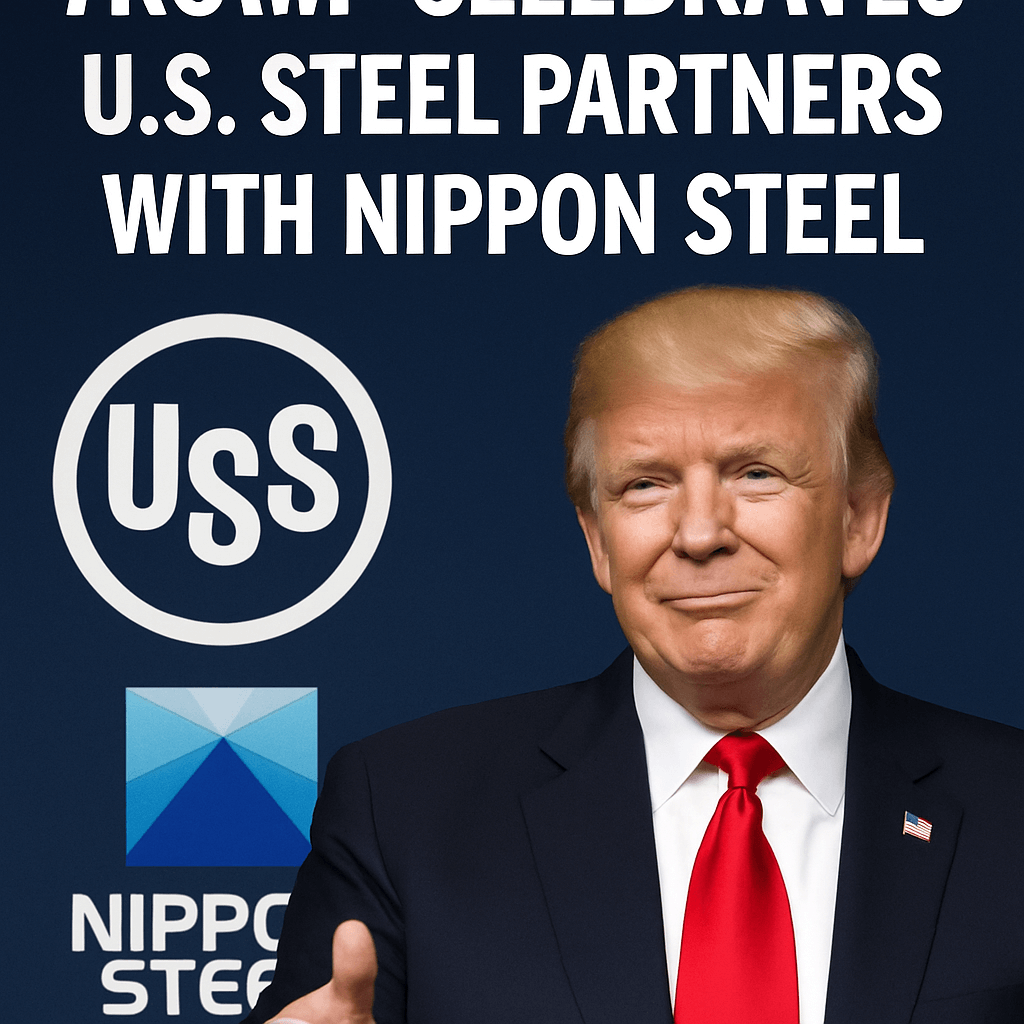Trump Celebrates U.S. Steel Partnership with Nippon Steel

President Donald Trump held a rally in Monongahela Valley, Pennsylvania, on Friday to unveil a details-to-come agreement securing “partial ownership” by Japan’s Nippon Steel in Pittsburgh-based U.S. Steel, emphasizing that the iconic American producer will remain under U.S. control. The event underscores the administration’s focus on revitalizing domestic manufacturing and safeguarding strategic supply chains.
Background: From Opposition to Strategic Alliance
When Nippon Steel first announced in late 2023 a $14.9 billion bid to acquire U.S. Steel outright, the Trump administration pledged to block the deal on national security grounds. Within months, however, White House officials and Japanese counterparts negotiated a revised structure that Trump now calls a “strategic partnership” rather than a full takeover.
- Original bid announced: November 2023
- Initial administration opposition: December 2023
- Revised agreement unveiled: June 2024
Neither U.S. Steel nor Nippon Steel has released complete terms. State and federal lawmakers briefed on the deal describe an arrangement requiring Nippon to invest an additional $14 billion into U.S. facilities, for a total commitment of nearly $29 billion.
Deal Structure and Government Safeguards
Key features reported in insider briefings include:
- Golden share mechanism: The U.S. government would hold a veto right over board decisions via a “golden share,” ensuring any strategic changes require federal approval.
- Board composition: At least five of eight board seats reserved for U.S. nationals, including three appointed by the U.S. Treasury Department.
- Executive leadership: Management roles—CEO, CFO and COO—must be filled by American citizens with 10+ years in U.S. steel or defense industries.
- CFIUS review: The Committee on Foreign Investment in the U.S. initiated a Section 721 review in May 2024, extending its deadline to early Q3 2024.
The White House has declined to comment on specific covenants, while Nippon Steel issued a general statement supporting a “partnership that secures U.S. Steel’s future.”
Technical Implications for U.S. Steel Capacity
The expanded capital infusion is earmarked for upgrades across five major complexes:
- Mon Valley Works (Pennsylvania): Modernization of blast furnaces & increase coke oven efficiency by 12%.
- Gary Works (Indiana): Installation of a 1.5 million tons per year (mtpy) electric arc furnace (EAF) for scrap-based steelmaking.
- Birmingham Plant (Alabama): Expansion of hot strip mill capacity by 700,000 mtpy.
- Big River Steel tie-up (Arkansas): Joint R&D on near-net-shape casting and thin-gauge technology.
- Minneapolis Works (Minnesota): Carbon capture retrofit for the existing blast furnaces targeting a 20% CO₂ reduction.
Analysts at S&P Global Ratings note that the shift toward EAF technology aligns with industry decarbonization goals and may boost U.S. Steel’s EBITDA margins by 150–200 basis points over five years.
Geopolitical Context and Supply Chain Security
Steel is designated a critical commodity under the Biden administration’s executive order on supply chain resilience. The U.S. Defense Production Act previously earmarked 30% of domestic steel output for defense suppliers. By preserving U.S. operational control, the partnership aims to mitigate risks from potential export restrictions or price swings in global markets.
“This structure addresses long-standing national security concerns by combining foreign capital with domestic oversight,” said Dr. Laura Chen, senior fellow at the Center for Strategic and International Studies.
Expert Perspectives and Market Outlook
Market observers point to several implications:
- Credit ratings: Fitch Ratings affirmed U.S. Steel’s long-term rating at BB+ with a stable outlook, citing the committed capex and governmental support.
- Cost synergies: Estimated $300 million in annual savings from procurement rationalization and shared technology platforms.
- Trade dynamics: The deal could strengthen the U.S. position in negotiations at the World Trade Organization on antidumping measures against Chinese steel.
Jefferies analysts forecast U.S. Steel’s share price could rise 15–20% if the deal closes by September 2024 without significant concessions.
Political Significance in Key States
Trump’s rally, held near the Edgar Thomson Works blast furnace, signals outreach to blue-collar voters in swing regions. Pennsylvania Gov. Josh Shapiro (D) described himself as “cautiously optimistic,” while Republican Sen. David McCormick lauded the plan’s benefits for jobs and national security.
Union Response and Labor Considerations
The United Steelworkers union continues to press for guaranteed collective bargaining rights under the new structure. In a recent statement, USW President Tom Conway said,
“We support investment in U.S. facilities, but workers must see binding commitments on wages, benefits and job security.”
Next Steps and Regulatory Timeline
Key upcoming milestones:
- CFIUS final determination: Q3 2024
- Shareholder votes at both companies: Q4 2024
- Anticipated closing and capex rollout: by year-end 2024
If approved, the alliance will become one of the largest foreign direct investments in U.S. manufacturing in the past decade, reshaping the domestic steel sector for years to come.